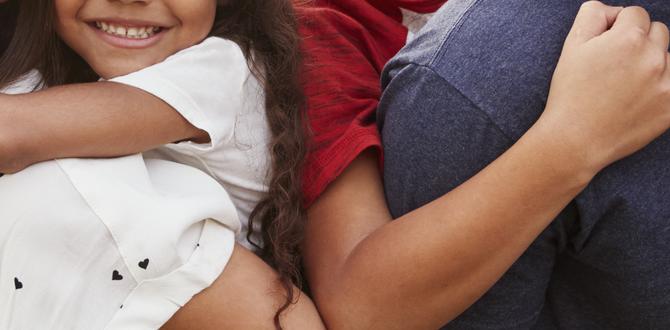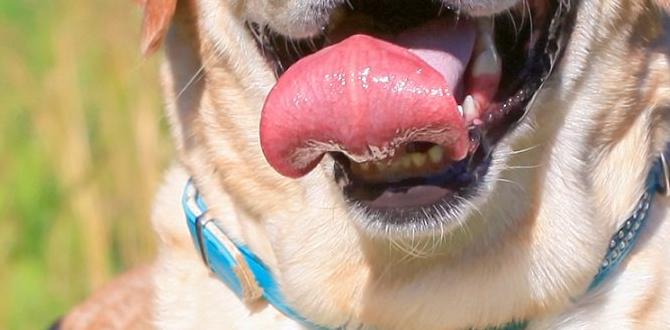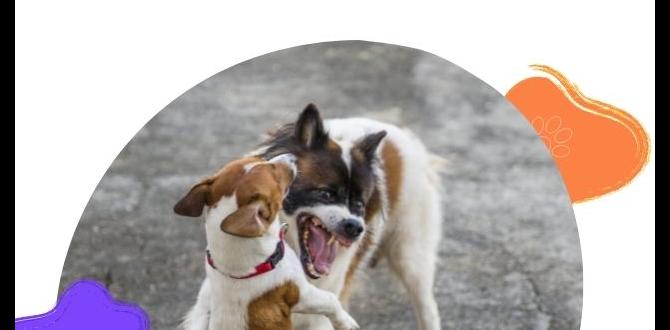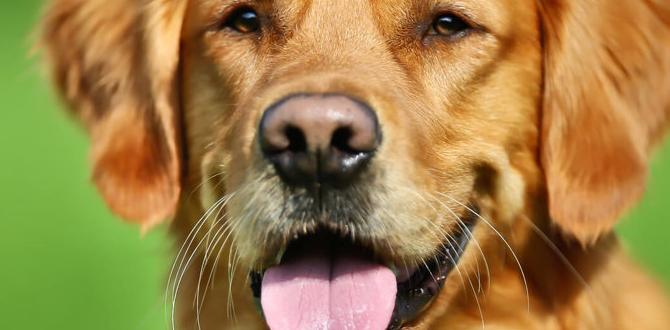Have you ever seen a dog fiercely protect its toy? This behavior is called “resource guarding.” It’s when a dog gets protective of its things. It can be a bone, toy, or even a person. Why do dogs do this? Can we help them stop? Let’s dive into the world of dog resource guarding fast to find out!
Key Takeaways
- Resource guarding is common in many dogs.
- Understanding why helps address it effectively.
- Training can reduce dog resource guarding fast.
- Patience is key when dealing with guarding dogs.
- Seek help if your dog shows aggressive guarding.
What is Dog Resource Guarding?
Dog resource guarding is when a dog protects something valuable. This can be food, toys, or even people. Dogs have this instinct to keep their precious items safe. Some dogs might growl or snap to warn others away. It’s like when you don’t want to share your favorite snack. This behavior can be tricky but it’s important to understand it.
- Dogs guard food, toys, and space.
- It’s a natural dog instinct.
- Not all guarding is aggressive.
- Some dogs guard their humans.
- It can start at a young age.
- Training helps manage guarding.
- Understanding the cause is crucial.
Addressing resource guarding starts with knowing your dog’s triggers. You can then create a plan to manage it. Some dogs may only guard in certain situations. Recognizing these moments helps in tackling the issue. Training and understanding can make a big difference. Helping a dog overcome guarding makes everyone happier and safer.
Fun Fact or Stats : Did you know 60% of dogs might show some form of guarding?
Why Do Dogs Guard Resources?
Ever wonder why dogs guard their stuff? Dogs are animals. In the wild, they need to protect their food and territory. This instinct can carry over to home life. Sometimes, dogs guard because they feel insecure. They might think their food or toy will be taken away. Understanding why helps us train them better. When a dog knows it won’t lose its prize, it feels safe. This reduces the need to guard.
Signs of Resource Guarding
Can you tell if a dog is guarding? Look for certain signs. A dog might growl or snap when someone approaches its treasure. It might stand between you and its prized item. Sometimes, the dog might even hide its toy. Recognizing these signs helps owners intervene early. Dogs communicate in their way. We must learn their language to help them feel secure and loved.
Is Resource Guarding Dangerous?
Is it dangerous when a dog guards resources? It can be. If left unchecked, guarding can escalate. A dog might bite or snap to protect its item. It’s crucial to notice guarding early. This way, you can address it before it becomes a problem. Training helps dogs learn there’s no need to guard. It teaches them trust and patience. A well-trained dog is less likely to resort to aggression.
How to Train Against Resource Guarding
Training helps address dog resource guarding fast. It involves patience and consistency. Start by teaching your dog basic commands like “leave it” or “drop it.” Reward your dog when it listens without guarding. Use treats as a positive reinforcement. Training sessions should be fun and short. Avoid scolding your dog. This can make things worse. Instead, focus on rewarding good behavior.
- Start with simple commands.
- Use treats as rewards.
- Keep training sessions short.
- Don’t punish or scold.
- Be consistent with training.
- Teach commands like “leave it.”
- Celebrate small successes.
Training takes time but is worth it. Your dog will learn to trust you. It will feel secure knowing its prized possessions are safe. Eventually, your dog might not see a need to guard at all. Remember, each dog is different. Training might take longer for some dogs. Stick with it for the best results.
Fun Fact or Stats : Dogs trained daily learn 40% faster!
Using Positive Reinforcement
Do you know how positive reinforcement works? It’s simple! Reward your dog for good behavior. When your dog doesn’t guard, offer a treat. This teaches your dog that not guarding has benefits. Over time, your dog will associate good behavior with rewards. Positive reinforcement is a powerful tool. It helps change behavior without fear. Dogs learn best when they feel happy and safe.
Role of Consistency in Training
Why is consistency so important in training? Imagine learning a new skill. If you practice every day, you improve fast. The same goes for dogs. Consistent training helps them learn quickly. Make sure to train your dog regularly. Stick to the same schedule. Dogs thrive on routine. Consistency builds trust and understanding. Your dog will know what to expect and how to behave.
What if Training Doesn’t Work?
What happens if training doesn’t work? Sometimes, training alone isn’t enough. Your dog might need extra help. Consider consulting a professional dog trainer. They have experience with resource guarding. A trainer can provide personalized advice. They can also teach you new techniques. Remember, every dog is unique. It’s okay to ask for help if you’re struggling.
Preventing Resource Guarding in Puppies
Did you know you can prevent resource guarding? Start when your dog is a puppy. Early training can stop guarding before it starts. Teach your puppy to share its toys. Reward it for good behavior. Avoid taking things away forcefully. This can create guarding behavior. Instead, use a trade game. Offer something better in exchange for their toy or treat. This teaches puppies that sharing is rewarding.
- Begin training early with puppies.
- Use positive reinforcement methods.
- Play trading games with toys.
- Avoid forced removal of items.
- Teach puppies to share happily.
- Reward calm behavior consistently.
- Build trust from a young age.
Prevention is always better than cure. By teaching puppies early, you reduce the chances of them guarding as adults. Puppies learn fast. With the right guidance, they grow into well-behaved dogs. They learn to trust and to not worry about losing their prized items. A little effort early on makes a big difference later.
Fun Fact or Stats : Puppies learn new behaviors 50% faster than adult dogs!
Importance of Socialization
Have you heard about socialization? It’s important for puppies. Socialization helps them get used to different things. This includes new people and animals. A well-socialized puppy is less likely to guard. They learn to be calm around others. Introduce your puppy to new experiences slowly. Make it fun and positive. This builds confidence and reduces fear.
Building Trust with Puppies
How do you build trust with a puppy? Trust is the foundation of a good relationship. Spend time with your puppy daily. Play games and go for walks. Use gentle handling and a soft voice. Always be kind and patient. Trust helps your puppy feel secure. A secure puppy is less likely to develop guarding behaviors.
Puppy Training Basics
What are the basics of puppy training? Start with simple commands like “sit” and “stay.” Use treats and praise to encourage your puppy. Keep training sessions short and fun. Puppies have short attention spans. Be patient and consistent. Repetition is key. Training helps puppies learn how to behave. It’s the first step in preventing resource guarding.
The Role of Environment in Guarding
Does a dog’s environment affect guarding behavior? Yes, it does. A stressful environment can increase guarding. Dogs feel more secure in a calm and stable home. Avoid sudden changes whenever possible. Create a safe space for your dog. This can be a cozy bed or a quiet corner. Make sure your dog has enough space to call its own. This reduces the need to guard.
- Create a calm home environment.
- Provide a safe space for your dog.
- Avoid sudden changes and stress.
- Keep your dog’s routine stable.
- Ensure your dog has personal space.
- Monitor for changes in behavior.
- Address stressors quickly.
Dogs thrive in routine. They feel secure when they know what to expect. A calm environment helps reduce guarding instincts. Monitor your dog’s behavior. Notice what might trigger guarding. Make necessary adjustments to create a peaceful home. Your dog will feel more relaxed and less likely to guard.
Fun Fact or Stats : Dogs with a stable environment show 30% less anxiety.
Identifying Stressors in the Home
How can you find stressors at home? Observe your dog’s reactions. Loud noises or new people might cause stress. Look for signs like pacing or whining. Once you identify stressors, work to reduce them. This can help decrease guarding behaviors. A peaceful home makes a happy, calm dog.
Creating a Safe Space
Why does a dog need a safe space? Like us, dogs need a place to unwind. A safe space helps them relax. It’s a spot where they feel secure. This could be a bed or a soft blanket in a quiet room. Make sure the area is free from stressors. Your dog’s safe space is its retreat. It helps them feel calm and reduces the need to guard.
Role of Routine in Reducing Guarding
How does routine help with guarding? Dogs love predictability. A steady routine makes them feel secure. Feed your dog at the same time daily. Stick to regular walk schedules. Consistency in daily activities reduces anxiety. This helps lessen the guarding instinct. A predictable day means a happier dog.
| Trigger | Reaction | Solution |
|---|---|---|
| Loud noises | Pacing or barking | Create a quiet space |
| New people | Growling or hiding | Introduce slowly |
| Sudden changes | Anxiety or guarding | Maintain routine |
| Lack of space | Guarding belongings | Provide personal space |
Conclusion
Understanding and managing dog resource guarding fast is vital. With patience and training, you can help your dog feel safe. Recognize triggers and create a calm environment. Every dog is different, so adapt the approach to suit yours. With care and consistency, guarding can become a thing of the past.
FAQs
Question: What causes dogs to guard resources?
Answer: Dogs guard resources due to instinct. They feel the need to protect their possessions. It can occur with food, toys, or space. Understanding the cause helps manage the behavior effectively.
Question: How can I stop dog resource guarding fast?
Answer: Training is key. Use positive reinforcement to teach commands like “leave it” or “drop it.” Consistent training, patience, and understanding can make a big difference in reducing guarding behaviors.
Question: Is resource guarding common in puppies?
Answer: Yes, puppies can show guarding behaviors. Early training and socialization help prevent it from developing. Using positive reinforcement and playing trading games can teach puppies to share and not guard.
Question: Can professional trainers help with guarding?
Answer: Absolutely. Professional trainers have experience with resource guarding. They provide personalized advice and new techniques. If your dog’s guarding persists, consulting a trainer is a wise step.
Question: Why is my dog suddenly guarding toys?
Answer: Sudden guarding might be due to changes in the environment or stress. A dog’s routine might have been disrupted. Ensure your dog feels secure and has a safe space to help reduce guarding.
Question: How important is environment in preventing guarding?
Answer: Environment plays a crucial role. A calm, stable environment reduces stress, which can help lessen guarding instincts. Create a safe and predictable space for your dog to feel secure and relaxed.
Meet Elyse Colburn, the devoted canine companion and storyteller behind the enchanting world of “Tales, Tails, and Adventures Unleashed.” A passionate dog enthusiast with a heart full of paw prints, Elyse Colburn shares heartwarming tales and insightful adventures, celebrating the joy, loyalty, and endless antics that make every dog a true hero. Join Elyse Colburn on this tail-wagging journey, where every post is a love letter to our four-legged friends.








